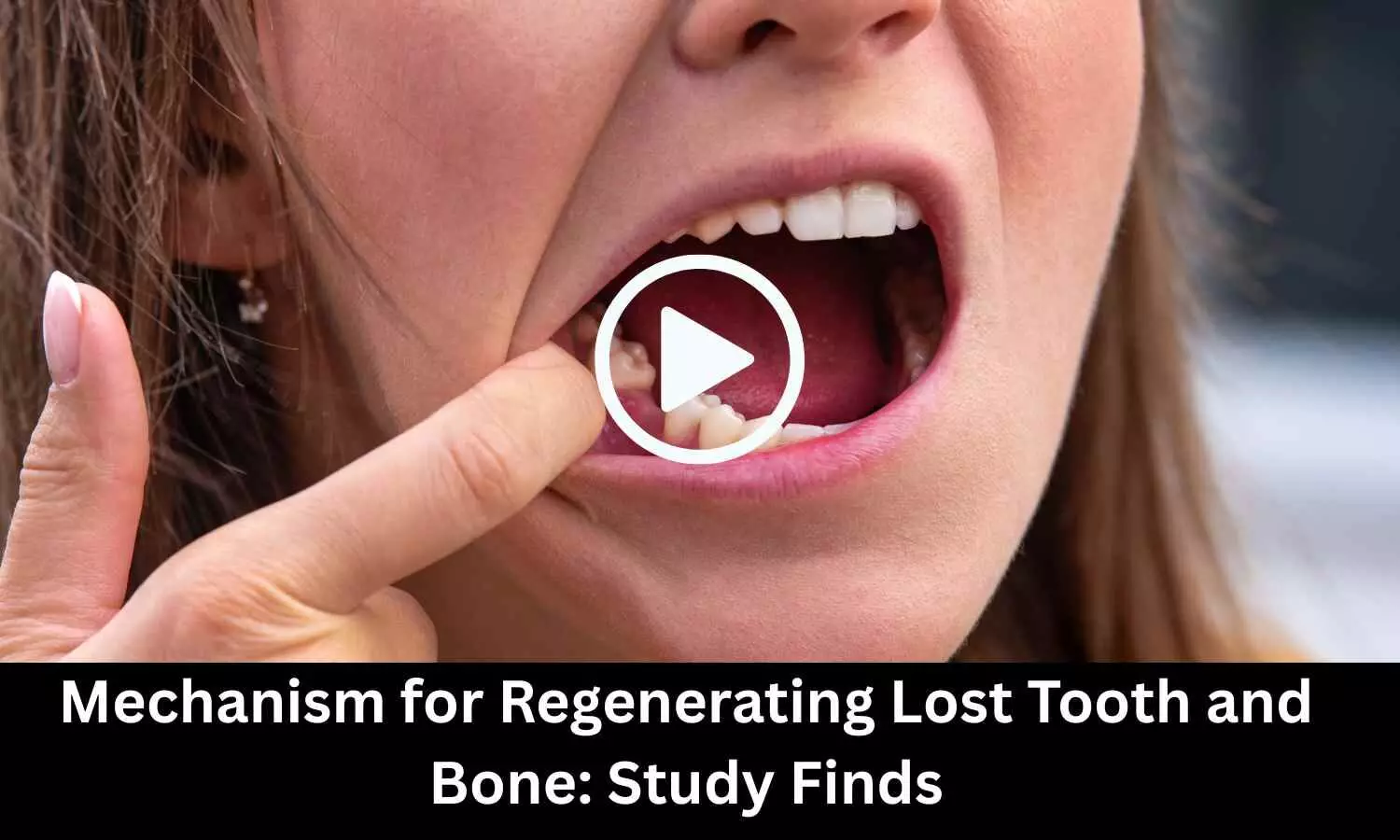Study Uncovers Mechanism for Regenerating Lost Tooth and Bone
- byDoctor News Daily Team
- 04 October, 2025
- 0 Comments
- 0 Mins

In a recent study, researchers from the Institute of Science Tokyo (Science Tokyo) have identified two distinct stem cell lineages responsible for forming the tooth root and surrounding alveolar bone. Their discoveries, published in two related studies in Nature Communications reveal new insights into the cellular signaling and differentiation processes that underpin natural tooth development-paving the way for future stem-cell-based therapies. Tooth loss has long been treated with artificial replacements like implants or dentures. While effective, these methods fall short of replicating the complexity, feel, and function of natural teeth. As a result, scientists have turned their attention to understanding how teeth form in order to unlock regenerative treatments. But tooth development is a highly coordinated process, involving multiple tissues and signaling pathways that remain only partially understood. The research team studied the cellular dynamics at the growing tip of tooth roots in genetically modified mice. Using lineage-tracing techniques, fluorescent tagging, microscopy, and gene-silencing tools, they uncovered how specific populations of stem cells specialize into different tissues within the tooth and jaw. One stem cell population, located in the apical papilla of the developing root, expresses the signaling protein CXCL12. These cells were found to differentiate into odontoblasts (tooth-forming), cementoblasts (root surface-forming), and osteoblasts (bone-forming) through the canonical Wnt signaling pathway. The second lineage, found in the dental follicle, consists of cells expressing parathyroid hormone-related protein (PTHrP), which can become cementoblasts, periodontal ligament fibroblasts, or osteoblasts—but only under specific conditions. "We observed that the Hedgehog–Foxf pathway needs to be suppressed to drive the alveolar bone osteoblast fate of PTHrP-expressing cells in the dental follicle, unraveling a unique tooth-specific mechanism of bone formation requiring deliberate on–off regulation of Hedgehog signaling," said Assistant Professor Mizuki Nagata from the Department of Periodontology, Graduate School of Medical and Dental Sciences at Institute of Science Tokyo (Science Tokyo), Japan, These findings offer a deeper understanding of how the root and supporting structures of teeth form naturally. Reference:Mizuki Nagata et al, Wnt-directed CXCL12-expressing apical papilla progenitor cells drive tooth root formation, Nature Communications (2025). DOI: 10.1038/s41467-025-61048-x
Disclaimer: This website is designed for healthcare professionals and serves solely for informational purposes.
The content provided should not be interpreted as medical advice, diagnosis, treatment recommendations, prescriptions, or endorsements of specific medical practices. It is not a replacement for professional medical consultation or the expertise of a licensed healthcare provider.
Given the ever-evolving nature of medical science, we strive to keep our information accurate and up to date. However, we do not guarantee the completeness or accuracy of the content.
If you come across any inconsistencies, please reach out to us at
admin@doctornewsdaily.com.
We do not support or endorse medical opinions, treatments, or recommendations that contradict the advice of qualified healthcare professionals.
By using this website, you agree to our
Terms of Use,
Privacy Policy, and
Advertisement Policy.
For further details, please review our
Full Disclaimer.
Recent News
NMC approves 2,337 new PG medical seats for NEET P...
- 22 October, 2025
Rajasthan MBBS student airlifted from Kazakhstan a...
- 22 October, 2025
NEET SS 2025 now on December 26th, 27th: NBE
- 22 October, 2025
Daily Newsletter
Get all the top stories from Blogs to keep track.


0 Comments
Post a comment
No comments yet. Be the first to comment!